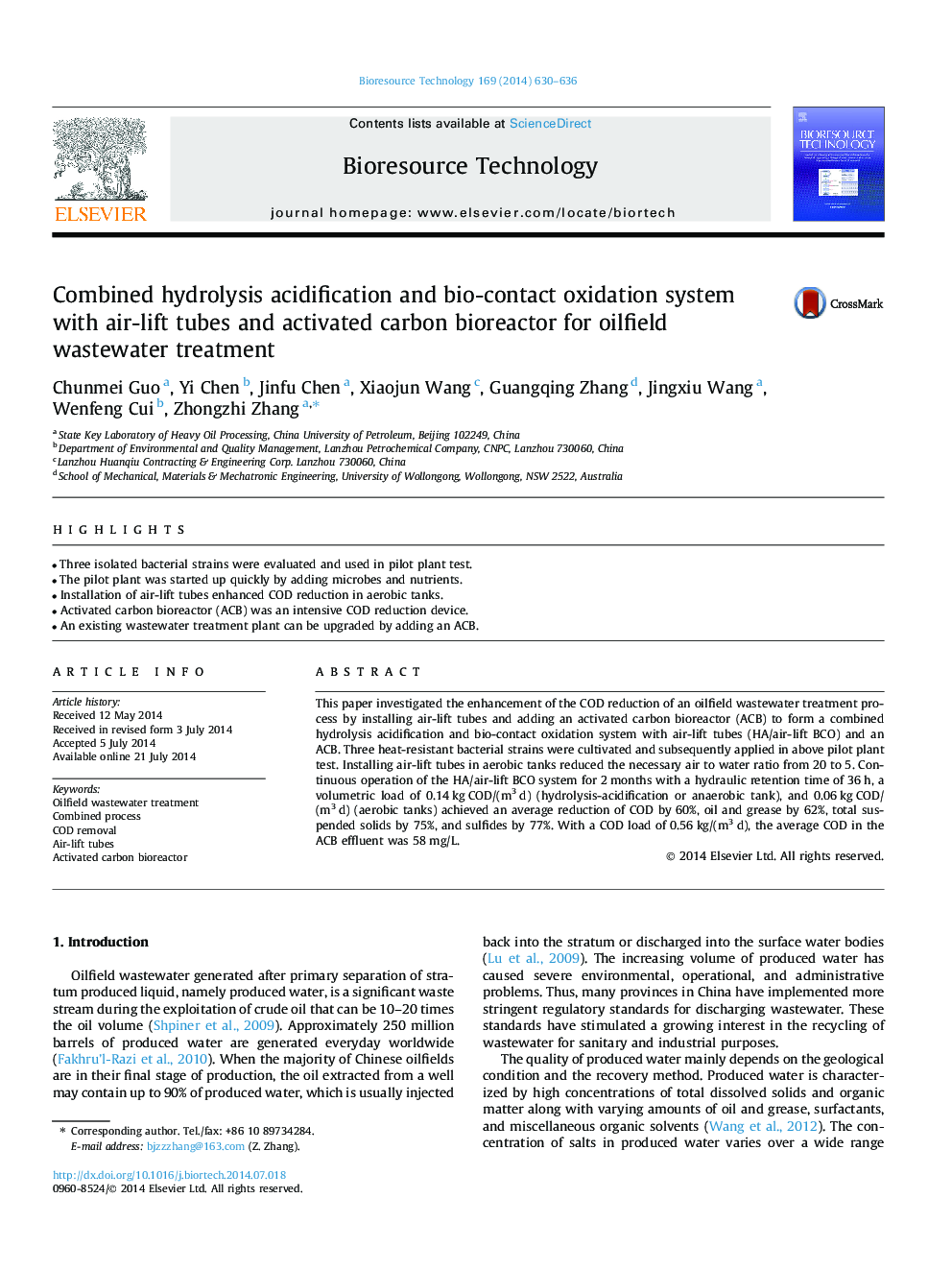| کد مقاله | کد نشریه | سال انتشار | مقاله انگلیسی | نسخه تمام متن |
|---|---|---|---|---|
| 680624 | 1459974 | 2014 | 7 صفحه PDF | دانلود رایگان |
• Three isolated bacterial strains were evaluated and used in pilot plant test.
• The pilot plant was started up quickly by adding microbes and nutrients.
• Installation of air-lift tubes enhanced COD reduction in aerobic tanks.
• Activated carbon bioreactor (ACB) was an intensive COD reduction device.
• An existing wastewater treatment plant can be upgraded by adding an ACB.
This paper investigated the enhancement of the COD reduction of an oilfield wastewater treatment process by installing air-lift tubes and adding an activated carbon bioreactor (ACB) to form a combined hydrolysis acidification and bio-contact oxidation system with air-lift tubes (HA/air-lift BCO) and an ACB. Three heat-resistant bacterial strains were cultivated and subsequently applied in above pilot plant test. Installing air-lift tubes in aerobic tanks reduced the necessary air to water ratio from 20 to 5. Continuous operation of the HA/air-lift BCO system for 2 months with a hydraulic retention time of 36 h, a volumetric load of 0.14 kg COD/(m3 d) (hydrolysis-acidification or anaerobic tank), and 0.06 kg COD/(m3 d) (aerobic tanks) achieved an average reduction of COD by 60%, oil and grease by 62%, total suspended solids by 75%, and sulfides by 77%. With a COD load of 0.56 kg/(m3 d), the average COD in the ACB effluent was 58 mg/L.
Journal: Bioresource Technology - Volume 169, October 2014, Pages 630–636
